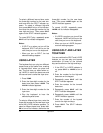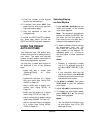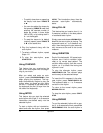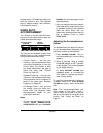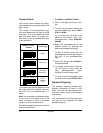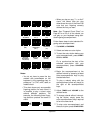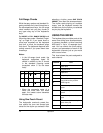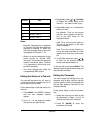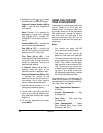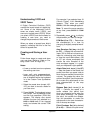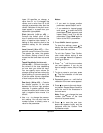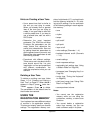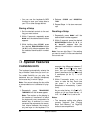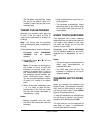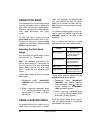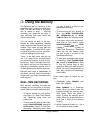
20
Operation
3. Repeatedly press or to select
the parameter you want to change.
Program Change Number (000 to
199)
— sets the tone assigned to
the channel.
Note:
Channel 10 is reserved for
percussion, so only tone numbers
160 (DRUM SET1) through 167
(DRUM SET 8) can be set for Chan-
nel 10.
Volume (000 to 127)
— controls the
volume of the selected channel.
Pan (000 to 127)
— controls the
pan. 000 is fully left, 64 is the center
position, and 127 is fully right.
Fine Tune (–50 to +50)
— fine
tunes the pitch of the selected chan-
nel in cent units. A cent is one hun-
dredth of a semitone. There are 12
semitones per octave.
C (Coarse) Tune (–12 to +12)
—
coarsely tunes the pitch of the
selected channel in semitone units.
Express (Expression) (000 to 127)
— controls the volume of the
selected channel. Similar to the vol-
ume setting, this is often used to
control crescendo/decrescendo.
4. Use the number buttons or
+
or
–
to
change the parameter setting.
5. To edit other channels, press
▼
to
return to the channel selection dis-
play, select the channel, then repeat
Steps 2–4.
6. To exit the parameter edit mode,
press
MIXER
.
USING THE CUSTOM
TONE SYNTHESIZER
The keyboard’s custom tone synthesizer
lets you create up to 32 of your own
original tones. To create a “user” tone,
you simply select one of the keyboard’s
200 preset tones, change its parame-
ters, then store the new tone in any
memory location from 168–199. You se-
lect and use a user tone the same as a
preset tone.
Notes:
• You cannot use tones 160–167
(drum set tones) as base tones.
• The preset tone you use as the
basis for a user tone is not changed.
• The tone locations 168–199 are not
empty (before you store user tones
there). They initially contain dupli-
cate versions of tone numbers 128–
159. The user tone you store in any
of those locations replaces the exist-
ing tone. If you delete a user tone,
the keyboard automatically restores
the initial, duplicate tone there.
The parameters you can change are di-
vided into four groups. For the details of
each parameter, see “Creating and Stor-
ing a User Tone” on Page 21.
•
Tone Characteristic Waveform
—
PCM Set
•
Volume Characteristic
— Amp
Envelope Set
•
Tone Pitch
— Pitch and Pitch
Envelope Set
•
Tone Characteristic
— Attack
Rate, Release Rate, Level, Touch
Sensitivity, and Pan



